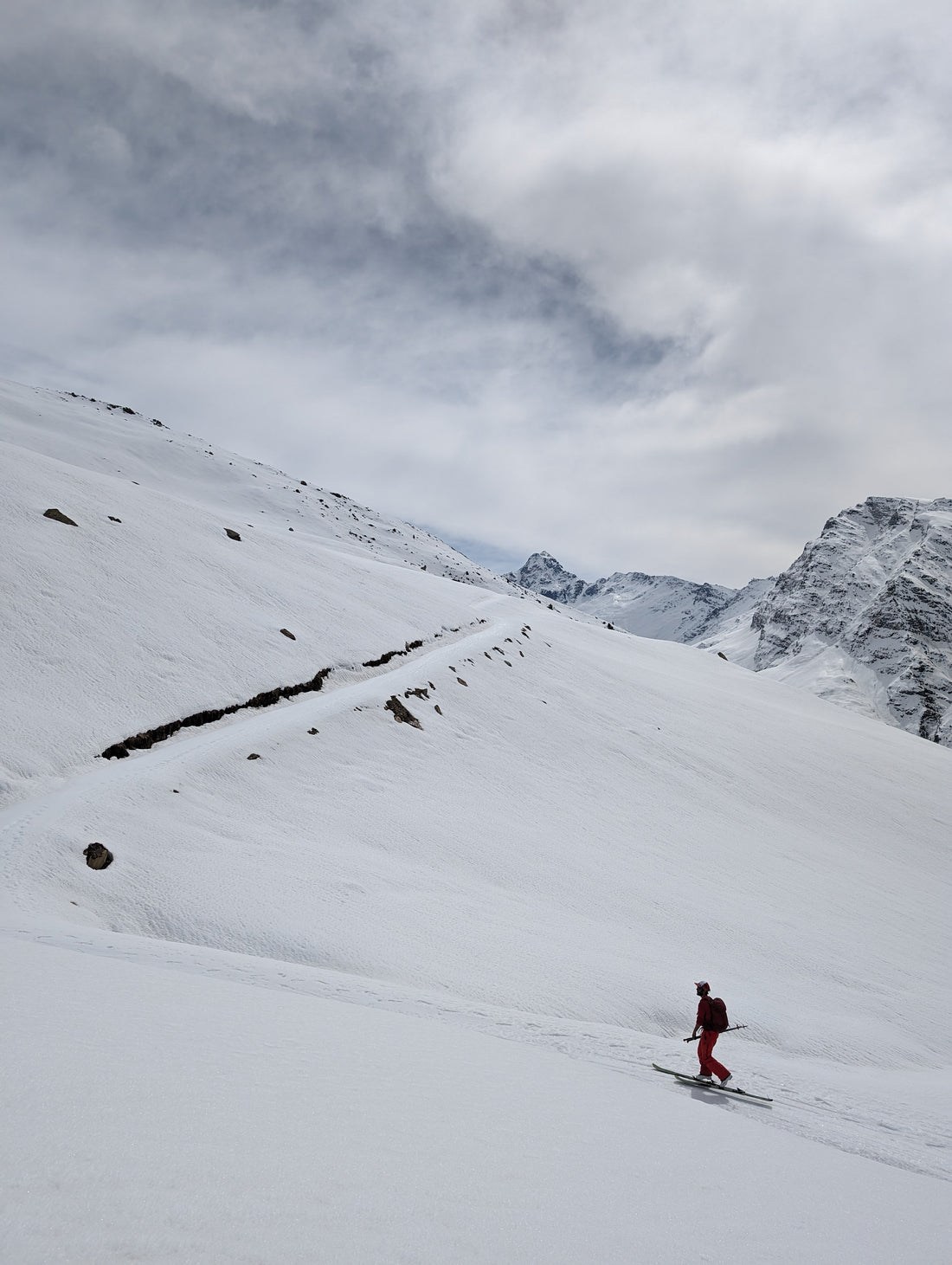Title: SkiMo: Exploring the Potential of Ski Mountaineering in India
Ski mountaineering, or SkiMo, is gaining traction in India, particularly in the Himalayan region. While not as widespread as in other parts of the world, SkiMo enthusiasts are discovering the immense potential of India's snowy peaks for this exhilarating sport.
The Himalayas offer a unique playground for SkiMo, with vast expanses of untouched snow and challenging terrain waiting to be explored. Regions like Gulmarg in Jammu and Kashmir, Auli in Uttarakhand, and Manali in Himachal Pradesh are emerging as hotspots for SkiMo enthusiasts, attracting adventurers seeking new challenges and breathtaking vistas.
Despite the relative infancy of SkiMo in India, there's a growing community of enthusiasts and professionals dedicated to promoting the sport. Ski resorts and adventure companies are offering SkiMo courses, guided tours, and equipment rentals, catering to both beginners and experienced skiers looking to take their passion to new heights.
The allure of SkiMo lies in its unique blend of athleticism, adventure, and mountain exploration. Uphill skiing challenges participants both physically and mentally, requiring stamina, technical skill, and strategic planning to conquer steep ascents and navigate rugged terrain. Yet, the rewards are plentiful, with the thrill of reaching new summits and experiencing the beauty of the Himalayas in winter.
As awareness of SkiMo grows in India, so too does its potential to become a thriving winter sports destination. With the right infrastructure, support, and promotion, SkiMo could carve out a niche in India's adventure tourism landscape, attracting enthusiasts from around the world to experience the thrill of SkiMo in the majestic Himalayas.
Origins and Evolution:
The roots of SkiMo trace back to the European Alps, where skiers began to venture beyond groomed slopes and lift-accessed terrain in search of greater challenges. What began as a niche pursuit among mountaineers and backcountry enthusiasts has evolved into a mainstream phenomenon, gaining traction across North America and beyond.
The concept of SkiMo revolves around performance-oriented ski touring, emphasizing the uphill journey as the primary objective. Unlike traditional skiing, where the descent takes precedence, SkiMo enthusiasts derive satisfaction from the physical exertion and technical skills required to ascend steep slopes and rugged terrain.
Techniques and Training:
Mastering the art of SkiMo requires a blend of physical fitness, technical proficiency, and strategic planning. Uphill skiing techniques vary depending on the terrain, snow conditions, and individual preferences. Skinning, the process of attaching specialized climbing skins to the base of skis, provides traction and grip for ascending steep slopes. Efficient kick-turns, proper weight distribution, and rhythmical strides are essential for maintaining momentum and conserving energy during ascents.
Training for SkiMo encompasses a holistic approach, combining cardiovascular endurance, muscular strength, and agility. Athletes engage in a range of activities, from ski-specific workouts and interval training to cross-training disciplines like trail running, cycling, and Nordic skiing. Uphill intervals, long-distance skinning sessions, and technical drills on challenging terrain help athletes build the physical and mental resilience needed to excel in SkiMo competitions and mountain expeditions.
Gear and Equipment:
Central to the SkiMo experience is the specialized gear and equipment designed to optimize performance and efficiency. Skimo gear is characterized by its lightweight construction, minimalist design, and technical innovations aimed at enhancing uphill capabilities without compromising downhill performance.
Key components of a SkiMo kit include:
1. Skis: SkiMo skis are typically narrower and lighter than traditional alpine skis, facilitating swift ascents and maneuverability on challenging terrain. Rocker profiles, carbon fiber construction, and integrated skin attachments are common features found in SkiMo skis.
2. Bindings: SkiMo bindings prioritize weight savings and uphill efficiency, offering secure attachment and release mechanisms for climbing and descending. Tech bindings, also known as pin bindings, are popular choices among SkiMo enthusiasts for their lightweight design and reliable performance.
3. Boots: SkiMo boots are designed for maximum mobility, comfort, and support during ascents and descents. Carbon fiber shells, low-profile cuffs, and thermo-moldable liners provide a precise fit and responsive performance on varied terrain.
4. Skins: Climbing skins are essential accessories for SkiMo skiers, providing traction and grip on snow-covered surfaces. Modern skins feature durable nylon or mohair construction, efficient adhesive systems, and specialized tip and tail attachments for secure uphill travel.
5. Clothing: SkiMo apparel prioritizes breathability, moisture management, and freedom of movement for aerobic activity in cold and variable conditions. Lightweight base layers, insulated jackets, breathable shells, and moisture-wicking socks are essential for comfort and performance during long-distance ski tours.
Community and Culture:
The SkiMo community encompasses a diverse range of athletes, adventurers, and outdoor enthusiasts united by a shared passion for uphill skiing and mountain exploration. From recreational skiers seeking new challenges to elite athletes competing on the international stage, SkiMo offers something for everyone.
SkiMo races, competitions, and events serve as gathering points for the community, fostering camaraderie, sportsmanship, and a spirit of adventure. Whether it's a local grassroots race or a prestigious international championship, SkiMo events showcase the athleticism, determination, and skill of participants pushing the boundaries of uphill skiing.
Beyond the competitive arena, SkiMo enthusiasts embrace a culture of exploration, self-discovery, and environmental stewardship. From backcountry hut trips and multi-day traverses to solo dawn patrols and peak bagging adventures, SkiMo provides a platform for connecting with nature, challenging personal limits, and forging lasting friendships.
Future Prospects and Challenges:
As SkiMo continues to gain popularity and visibility, its future prospects are promising yet accompanied by challenges and considerations. The rapid growth of the sport raises questions about access, sustainability, and safety in backcountry environments. Education, awareness, and responsible stewardship are essential for mitigating risks, minimizing impacts, and preserving the integrity of mountain ecosystems.
Moreover, the evolution of SkiMo technology, regulations, and competitive standards will shape the future direction of the sport. Innovations in gear design, avalanche safety equipment, and environmental practices are essential for enhancing safety, performance, and enjoyment for SkiMo enthusiasts worldwide.
:
In conclusion, SkiMo represents a dynamic and evolving frontier in the world of winter sports, blending athleticism, adventure, and exploration in mountain environments. From its humble origins in the European Alps to its burgeoning popularity across North America and beyond, SkiMo offers a unique perspective on skiing, emphasizing the journey over the destination and the ascent over the descent. With its emphasis on performance-oriented touring, lightweight gear, and community camaraderie, SkiMo is poised to inspire and captivate a new generation of uphill adventurers in the years to come.

